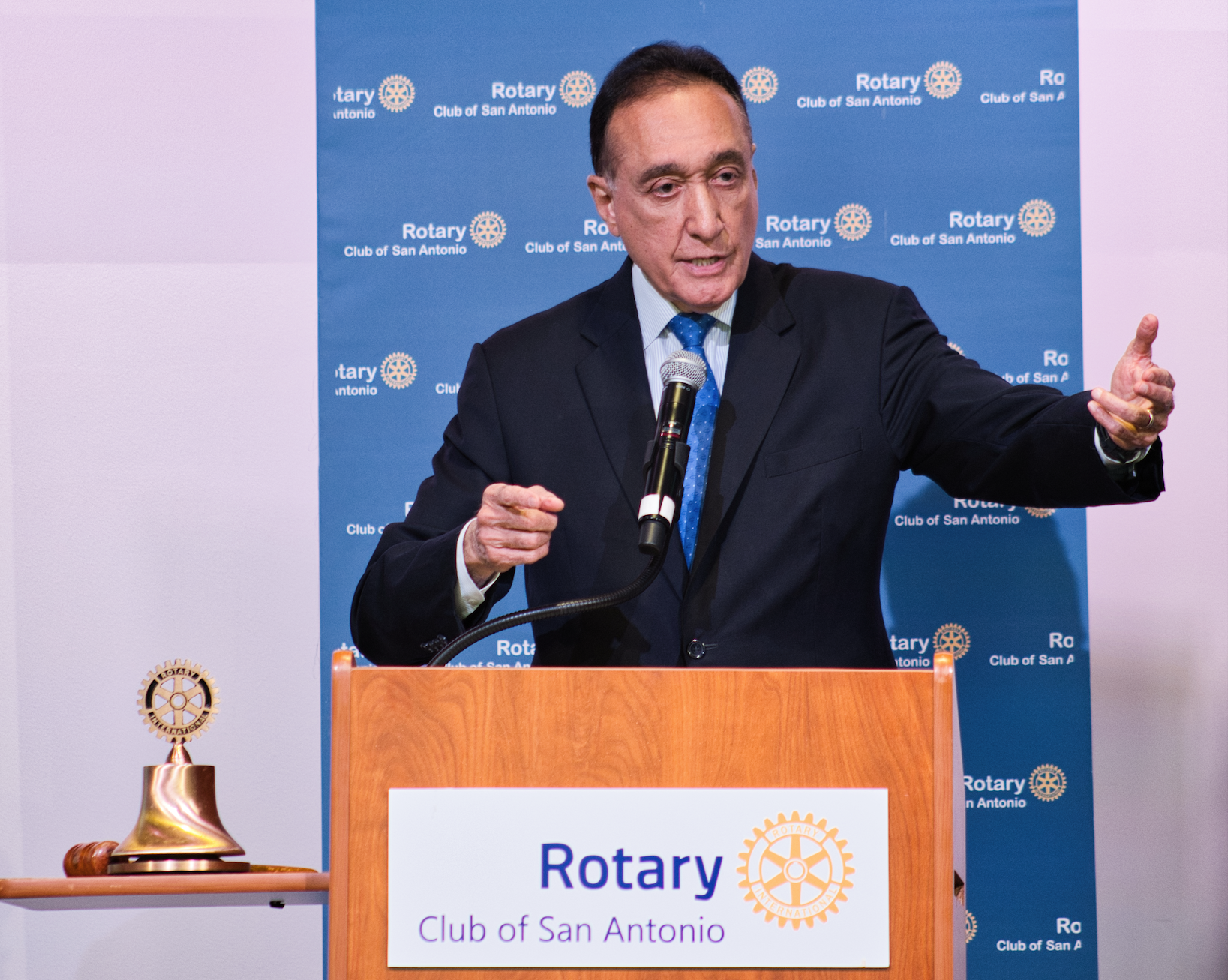

Former San Antonio Mayor and U.S. Secretary of Housing and Urban Development Henry Cisneros returned to the Rotary Cub of San Antonio on October 1 to share insights from his latest book, The Austin–San Antonio Megaregion: Opportunity and Challenge in the Lone Star State—co-authored with longtime journalist David Hendricks (former business editor and columnist at the San Antonio Express-News) and Robert Rivard (bigcitysmalltown podcast host and former editor of the San Antonio Express-News). The book examines the rapid rise of the Austin–San Antonio corridor, a region Cisneros described as “one of the most important growth stories in America today.”
Cisneros reminded Rotarians that when he took office as mayor in 1981, the city launched Target '90, an ambitious master plan that produced transformative projects such as flood control, the Central Library, and the Alamodome. Just as San Antonio once had to set its sights on 1990, Cisneros argued, the city and its neighbors must now look ahead to 2050. By then, the combined Austin–San Antonio region is projected to grow from 5.3 million people today to more than 8 million—an increase equivalent to adding the population of Chicago.
“San Antonio has a choice,” Cisneros said. “We can be a full partner with Austin in shaping a dynamic mega-region, or we can be a poor cousin watching from the sidelines.”
The numbers are striking. Williamson, Hays, and Comal counties rank among the fastest-growing in the country. San Antonio and Austin each top 2 million residents in their metro areas. Together, Cisneros noted, the corridor would already qualify as the 10th-largest metro in the United States.
Opportunities abound in higher education, biosciences, and advanced industries. Cisneros pointed to the University of Texas at Austin, UTSA’s burgeoning research programs, and Texas State’s 41,000 students as cornerstones of a knowledge economy. He recalled how, during his time as HUD Secretary under President Bill Clinton, expanding homeownership was a way to anchor communities in prosperity. In a similar spirit, today’s challenge is to ensure that growth brings opportunity for all.
Cisneros also warned of looming obstacles. Water scarcity, traffic congestion on I-35, housing affordability, and the need for better air connectivity all threaten to undermine progress. He compared the region’s trajectory to past economic powerhouses like Detroit or Silicon Valley, which lost ground when they failed to adapt.
At the same time, he expressed optimism that coordinated leadership could position the corridor as the nation’s most attractive growth area in the coming decades. “The question is not whether we will grow,” he said. “It is how we prepare for that growth.”
Rotarians were reminded that Cisneros’ career has always centered on bold visions. Whether opening San Antonio to international partnerships with Japan and Mexico, or leading national housing initiatives in Washington, he has sought to marry ambition with inclusivity. His latest work is no exception: it challenges San Antonio to embrace its place in a fast-emerging mega-region.
Copies of Cisneros’ book were available for signing after the luncheon.



.svg)
.svg)
.svg)
